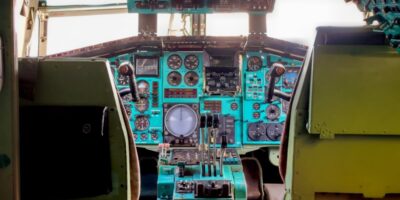The realm of aviation continues to evolve at a rapid pace, driven by technological innovation, environmental concerns, and the perpetual quest for safety and efficiency. The latest advancements in aircraft technology reflect a blend of cutting-edge engineering, digital technology, and a renewed focus on sustainability. This article explores several key areas where significant progress has been made, shaping the future of air travel.
**1. Electric and Hybrid Propulsion Systems**
One of the most groundbreaking advancements in aircraft technology is the development of electric and hybrid propulsion systems. Companies like Airbus, Boeing, and smaller startups are heavily investing in research to create engines that can reduce or eliminate carbon emissions. Electric aircraft, such as the Alice from Eviation Aircraft, promise to revolutionize short-haul flights with zero emissions and lower operating costs. Similarly, hybrid systems combine traditional combustion engines with electric motors to improve fuel efficiency and reduce emissions.
**2. Advanced Materials**
The use of advanced materials such as carbon fiber composites and graphene is increasingly prevalent in aircraft manufacturing. These materials offer high strength-to-weight ratios, enhancing the aircraft’s performance while reducing its weight significantly. Lighter aircraft require less fuel, which not only cuts operating costs but also reduces carbon emissions. The Boeing 787 and Airbus A350 are examples of aircraft that extensively use carbon fiber in their construction.
**3. Autonomous Flight Technology**
Autonomous flight technology is another area witnessing rapid advancements. The push towards fully autonomous, pilotless aircraft could transform the aviation industry by improving safety records, reducing human error, and optimizing flight operations. Several companies are testing drones and small passenger aircraft that operate entirely autonomously, using sophisticated sensors, AI algorithms, and advanced navigation systems.
**4. Enhanced Connectivity**
Connectivity in aircraft is improving dramatically, with onboard Wi-Fi speeds catching up to ground-level broadband. This enhancement not only improves the passenger experience but also facilitates better communications and real-time data exchange between the cockpit and ground control, which can be crucial for safety and efficient flight operations. High-speed satellite internet and next-generation communication systems are being integrated into modern aircraft designs.
**5. Green Fuel Alternatives**
In response to the urgent need for sustainable aviation, significant research is being funneled into developing biofuels and other green fuel alternatives. These fuels are designed to be used in existing jet engines with minimal modifications, offering a viable near-term solution for reducing aviation’s carbon footprint. Innovations include fuels derived from algae, used cooking oil, and other non-petroleum sources.
**6. Improved Engine Efficiency**
Jet engine technology has also seen considerable improvements, with new engines offering higher efficiency and lower emissions. Advances in turbine materials that can withstand higher temperatures, improvements in aerodynamics, and innovations in noise reduction technologies contribute to making engines more efficient and environmentally friendly. The GE9X engine, used in Boeing’s 777X, is a prime example, featuring the largest fan blades in the world and a suite of new technologies to optimize performance.
**7. Next-Generation Avionics**
Modern aircraft are equipped with advanced avionics systems that enhance navigational accuracy and overall safety. These systems integrate seamlessly with global satellite navigation systems, providing pilots with real-time, precise flight data. Enhanced vision systems (EVS), synthetic vision systems (SVS), and heads-up displays (HUDs) are becoming standard in new cockpits, helping pilots navigate challenging weather conditions and terrain.
**8. Noise Reduction Technologies**
As airports become increasingly integrated into urban environments, reducing aircraft noise pollution is more crucial than ever. Advances in noise reduction technologies include modifications to aircraft engines, airframes, and flight paths. New materials and aerodynamic designs also play a role in decreasing the noise generated by aircraft during takeoff and landing.
**Conclusion**
The advancements in aircraft technology are setting the stage for a more sustainable, efficient, and safe future in aviation. Whether it’s through the development of electric planes, the adoption of green fuels, or the enhancement of autonomous flight systems, the industry is on the brink of a new era. As these technologies continue to mature and gain regulatory approval, the dream of a cleaner, quieter, and more efficient airspace becomes increasingly achievable. This ongoing evolution promises not only to impact the way we fly but also to contribute significantly to global environmental goals.




Subscribe for Updates
Get the latest articles delivered to your inbox.
We respect your privacy. Unsubscribe anytime.